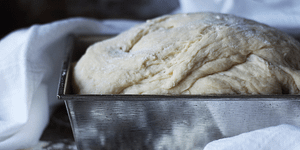Foraging 101: Where to find your bounty

We’ve given you descriptions. We’ve given you recipes. We’ve given you (hopefully) inspiration to explore. And now we’re giving you the information you need to begin foraging on your own: where to do it and how to be safe. So go forth, young foragers, and start gathering your bounty.
The following excerpt is from Forage, Harvest, Feast by Marie Viljoen. It has been adapted for the web.
Where to Forage?
For urbanites, the local farmers market is becoming an exciting place to find and sell wild foods. I am enchanted to see edible invasives in neat bundles on market tables. But it is all about context. If paying $5 for a bunch of field garlic or $25 for 1⁄4 pound of mugwort that you could forage for free is unappealing (or wildly funny when you see it growing 10 feet away along a chain-link fence), begin scouring your neighborhood. As you learn a new plant, you will begin to notice where it grows. Even in cities there are places where you can gather lamb’s quarters and amaranth in abundance, or pick pounds of ripe serviceberries and black cherries. Make friends with local community gardens, and with your neighbors.

Increasingly, landscape architects and city planners are deploying more edibles in their projects. If that is not already happening in your area, encourage it. I am very lucky to have a spectacular local classroom, the Brooklyn Bridge Park. Its creators and designers included a significant list of edible American plants. While foraging is not allowed, it is an ideal setting to learn and teach about plants with native edible potential in order to encourage their use in home gardens, large or small. Down the road the Gowanus Nursery sells many of these plants. This kind of natural partnership (which happens to be fortuitously accidental, in this case) should be more common.
If you have access to bona fide nature, you are privileged. Be respectful. Forage for the future, in moderation, and without stomping native ephemerals. If you are city-bound but would like a wild foraging spot, connect with local land trusts and preserves and make friends with landowners who might allow you to forage on their land. They do exist. If you are a landowner, consider the wild edible potential of your land and how best to curate and conserve it.
Some of my best forages have come from farm meadows and fencerows, with the farmer’s permission. Again, it is about approaching the people in charge and asking, nicely. Usually, the answer is an amused affirmative. Weeds in crop rows can be good to gather if they have not been subjected to herbicides or high fertilizer application rates. (In relevant chapters I elaborate on safety concerns for specific foraged foods.)
Gardeners and growers are also lucky. You have a lot to draw on in terms of wild flavor. Depending on your microclimate and USDA hardiness zone, many edible wild plants can be cultivated. Bring the forages to your own backyard.
Don’t Kill Yourself
I mean, it’s obvious. Foraging is an act of independence. It carries with it the grave responsibility of informing yourself. Treat all information, including mine, with some circumspection and an open mind. Cross-reference, double-check, and remember that anyone can say anything on the internet with a voice of digital authority. Even published authors get it wrong, sometimes.

If you are eating a new food, there is always a rare possibility of an allergic reaction. Eat a small amount and wait twenty-four hours to see if you puff up or lose your lunch.
Foraging can be an individual act or a communal one—just like eating. Incorporating wild foods into your everyday cooking means finding them, and finding them often leads to meeting others with similar passions. As much as I hope this book leads to the rediscovery of lost tastes and a renewed appreciation for the plants that provide them, I hope it leads to feasts with family and newfound friends.
Or if you are a misanthropic loner like so many of us foragers are, a feast at a table for one.
Recommended Reads
Recent Articles
Want to spice up your traditional bread recipes? This salt-rising bread recipe by fermentation expert Sandor Ellix Katz has all the simplicity, flavor, and uniqueness you’ve been searching for! The following is an excerpt from Sandor Katz’s Fermentation Journeys by Sandor Ellix Katz. It has been adapted for the web. What Is Salt-Rising Bread? Salt-rising…
Read MoreNothing says “spring” like a fresh, foraged meal! Savor the flavors of the season with this Milkweed Bud Pizza recipe.
Read MoreWhat’s so great about oyster mushrooms? First, you can add them to the list of foods that can be grown indoors! They are tasty, easy to grow, multiply fast, and they love a variety of substrates, making oyster mushrooms the premium choice. The following is an excerpt from Fresh Food from Small Spaces by R. J.…
Read More








